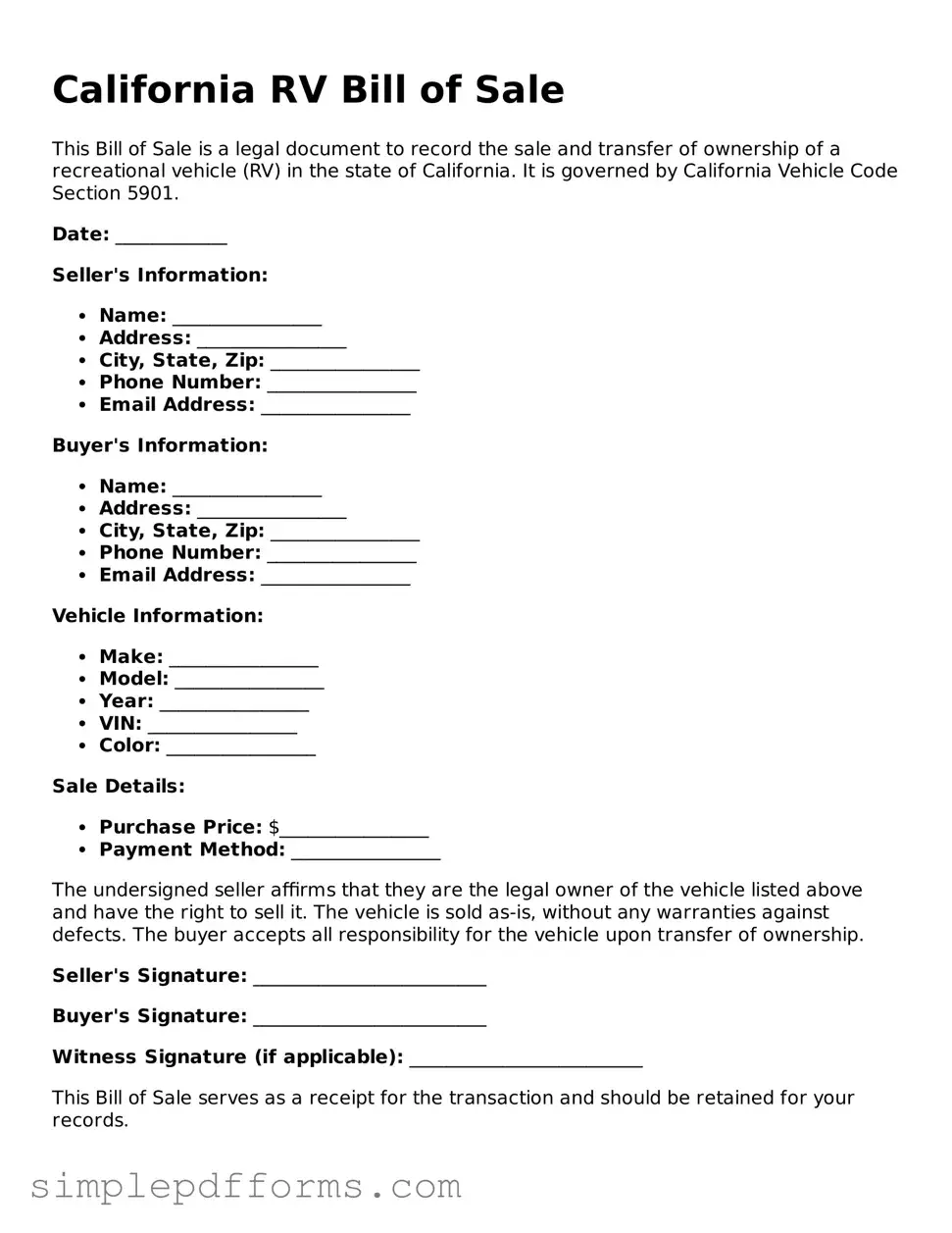California RV Bill of Sale
This Bill of Sale is a legal document to record the sale and transfer of ownership of a recreational vehicle (RV) in the state of California. It is governed by California Vehicle Code Section 5901.
Date: ____________
Seller's Information:
- Name: ________________
- Address: ________________
- City, State, Zip: ________________
- Phone Number: ________________
- Email Address: ________________
Buyer's Information:
- Name: ________________
- Address: ________________
- City, State, Zip: ________________
- Phone Number: ________________
- Email Address: ________________
Vehicle Information:
- Make: ________________
- Model: ________________
- Year: ________________
- VIN: ________________
- Color: ________________
Sale Details:
- Purchase Price: $________________
- Payment Method: ________________
The undersigned seller affirms that they are the legal owner of the vehicle listed above and have the right to sell it. The vehicle is sold as-is, without any warranties against defects. The buyer accepts all responsibility for the vehicle upon transfer of ownership.
Seller's Signature: _________________________
Buyer's Signature: _________________________
Witness Signature (if applicable): _________________________
This Bill of Sale serves as a receipt for the transaction and should be retained for your records.
